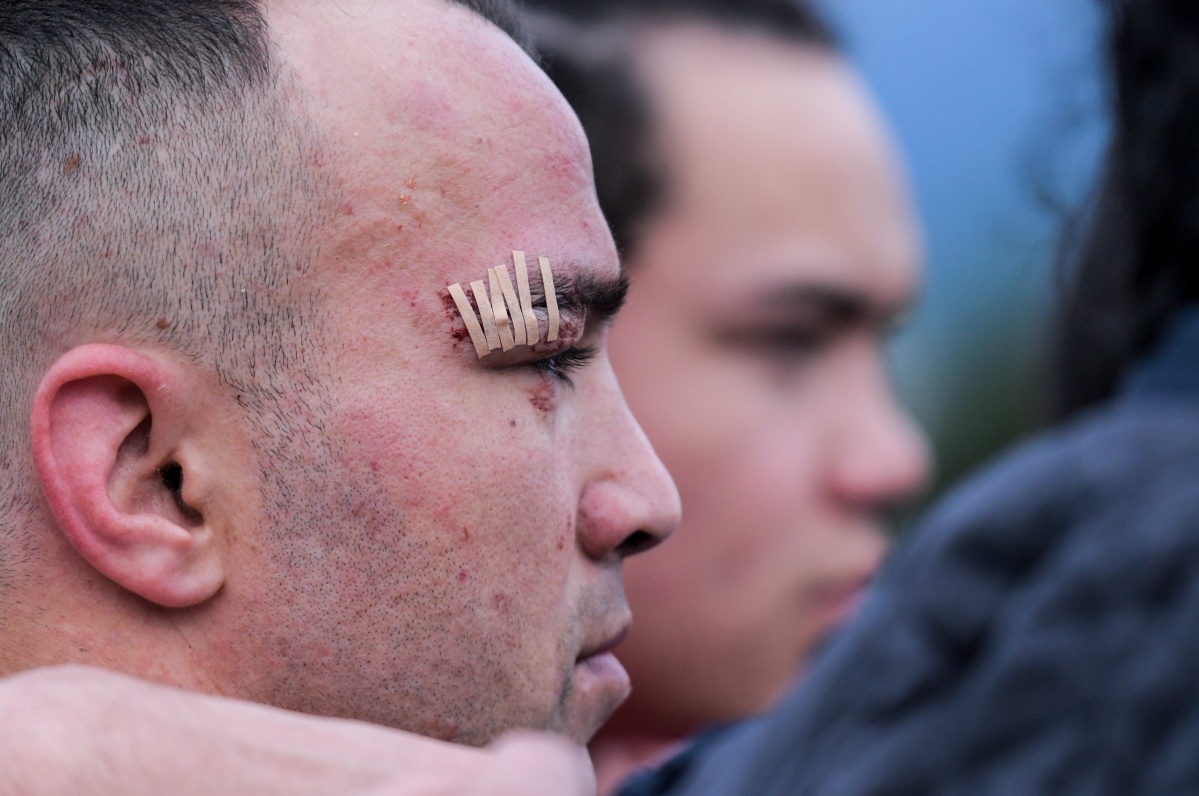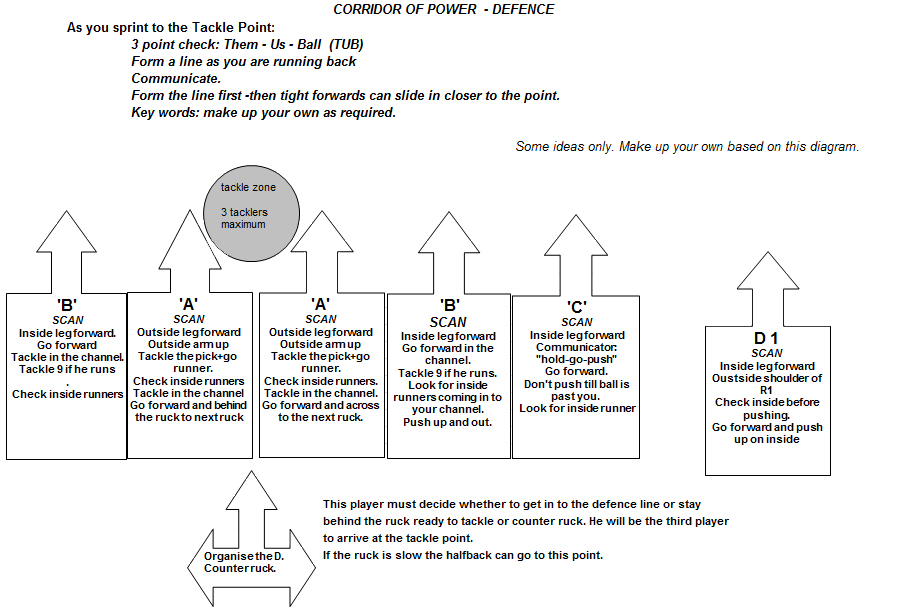- Rugby Toolbox
- Resources & Education
- Learn more
- Articles
- Snook on Coaching
- The Psychological Edge
- Ruck & Run Drill
- Playing Philosophy – Ruck & Run Coaching Components
- Playing Philosophy – Spread the Forwards
- Playing Philosophy – A forward behind the ruck
- Playing Philosophy – Ruck & Run
- Playing Philosophy – An idea!
- The Breakdown
- Building Positivity [3]
- Building Positivity [2]
- Building Positivity
- Fitness and Game Related Activities
- Getting the Head Working
- Missiles are Dangerous
- Use of Video
- Winger Attacking Outside First-Five
- Player Profiling
- Selection
- Fitness Away from the Team Session
- Playing Philosophy (Pre season Prep)
- Coaching the Coaches
- The Rugby Coordinator and Pre-Season Preparation
- Why Not Use Tap Penalties More Often?
- Why Kick the Ball Down the Middle of the Field?
- Defending the 5 Metre Lineout Drive
- Scoring from the 5 Metre Lineout
- What are the Kicking Team Aiming to Achieve from Halfway Restart
- Should We Practice Scoring Tries?
- Team Culture
- Looking After Your Players
- Coach Survival Tips
- Under 11/13 – Backline Defence
- Under 11/13 – Ruck Defence
- Under 11/13 – Back Attack
- Under 13 – The Counter Attack
- Under 11/13 – The Maul
- Under 11/13 – Lineouts
- Under 11/13 – Decision Making
- Under 11/13 – Support Play
- Under 11/13 – Dive Pass and More
- Under 11/13 – Drop & Grubber Kick /Highball Catch
- Under 11/13 – Front on Tackling
- Under 11/13 – Contact – Getting Up – The Ruck
- Under 11/13 – The Coaching Session
- Under 8/10 – Using Space
- Under 8/10 – Kicking
- Under 8/10 – Contact and Picking Up the Ball
- U8/U10 Draw & Pass and Sidestep
- Under 8/10 – The Tackle
- Under 8/10 – The Coaching Session
- Under 7 – Test Your Coaching – Support Play
- Tap Pass and Swerve U7
- Ball Familiarisation; Passing & Receiving
- Activities for the Non-Contact Tackle
- Under 7 – The Coaching Session
- Coaching Teenagers – After the Ruck
- Coaching Teenagers – The Practice Session
- Coaching Teenagers – Best Practice
- Coaching Kids – Best Practice
- Plays from a Tap Penalty
- Running Plays from a 5 Man Lineout
- Driving Plays from a 5 Man Lineout
- Strike Plays at the End of the Lineout
- Back Strike Plays at the Lineout
- Wide Strike at the Scrum (2)
- Wide Strike at the Scrum
- Midfield Attack at the Scrum
- No 8 Plays at the Scrum (2)
- No 8 Plays at the Scrum
- The Cut Out Pass
- Skills to Penetrate (2)
- Skills to Penetrate
- Movements to Penetrate
- Patterns to Penetrate
- Contact and Continuity
- Keeping the Ball Alive Out Wide
- Pre Season Support Activities
- Checklist
- Understanding the game
- The Playing Philosophy
- The Lineout
- Overview
- Team Profile
- Start Now!
- Backrow
- Nine and Ten
- Rugby-related Fitness Activities
- The Psychological Edge
- Open Field Play
- Key Performance Indicators
- Improving Team Performance
- Backline Attack Concepts
- Tactics at Phase Play
- Playing Philosophy
- The ‘Stop Focus’
- Kick Attack
- Clearing the 22
- Wide Attack at Phase
- Player Focus
- Scrum Preparation
- Lineout Preparation
- Back Attack Preparation
- Sevens Preparation
- Sevens Kick Offs
- Sevens Scrum and Lineout
- Sevens Attack Patterns
- Sevens Defence
- 7's Selection and Game Planning
- Coaching and Leadership
- How the Game Evolves
- Changing Within the Game
- Learning from the Television.
- Using Tap Penalties Wisely
- Defence Drills
- Defence Drills for Tight Five
- Team Defence and TUB’ing
- Establishing Patterns from the Ruck
- Structured Phase Play
- Structuring Phase Play on the Run
- Coaching Roles
- Structuring a Close in Tackling/Defensive Session
- Coaching in Threes
- Attacking Back Play
- Kick Off Chase
- Wrap Around Back Plays
- Lineout Plans
- Looking and Learning
- Motivating Your Players
- Scrum Attack
- Refocusing the Team
- Monitoring the Progress
- Learning the Game
- Playing to the Laws
- Small is OK
- Decisions After the Tackle
- Improving Your Coaching
- Food for Thought
- More Food for Thought
- Passing & Catching
- How Ireland Nearly Beat the All Blacks
- The Progressive Coach
- Try Something New
- Encouraging Excitement
- The Mental Approach
- Where to Start
- Being the Best You Can Be
- Off the Ball Decisions
- Lineouts Difficult to Master
- Decisions on the Run
- Rucking and Rolling
- A Successful Approach
- Gaining Clarity
- Manipulation vs Physicality
- Beating the Drift
- To Ruck or Not to Ruck
- Stopping the Lineout Drive
- Fine Tuning the Planning
- It's a Running Game
- RugbySmart 2015
- Using the Shoulders
- Loosehead Prop / Tighthead Prop
- Position Specific – Hooker
- Position Specific – Lock
- Position Specific – Blindside Flanker
- Position Specific – Openside Flanker
- Position Specific – No 8
- Position Specific – Halfback
- Position Specific – First Five Eighth
- Position Specific – Second Five Eighth
- Position Specific – Centre Three-quarter
- Position Specific – Wing
- Position Specific – Fullback
The Psychological Edge

PLANNING & IMPLEMENTING: 1- The Psychological Edge. “ Physical Domination at the Tackle” - Ian Snook
The Psychological Edge
What is the major strength in your squad which if developed fully will give the team the greatest psychological edge in every game? You should work hard on making this aspect the focus for the team; something they know they are really good at, and if carried out properly will give a good chance of victory.
Ideally this will be based on a confrontational zone or it may be based on a tactical, speed and skill area. Once you decide what this aspect of play is going to be you need to establish the basic skill set and then develop it to a degree so that it creates pressure on opponents and provides attacking opportunities for yourself.
Physical Domination
If you believe this depicts the culture of your team then let them know, and plan accordingly. Start by discussing with the players what this actually means and ways in which they are going to achieve this aspect to their game. They must be able to visualize the ‘big hits’ on defence; counter rucking; players bursting on the shoulder to receive the short ball; and other aspects that they bring to your attention.
Once the team have a clear picture of what they want to achieve here you need to plan the necessary skill and tactical requirements and the mental processes which will click this part of the Game Plan in to action every week. Remember, this is now part of your 80/20 plan, so there needs to be time devoted to these practices at most training sessions.
The Tackle Zone
Decide what this means to your team. Examples could include: ‘the big hit’; the ‘blast defence at phase’; ‘winning the Corridor of Power’ at the ruck area; counter rucking; ‘blast defence’ at set play. Make your list but don’t have too many. Base it on the strengths of your team members in the first instance.
Then break down each aspect: what are the skill requirements? What are the team requirements within this aspect? When will it be most effective during a game? What is the follow up? In each case you are encouraging the team to turn defence into attacking opportunities.

If we look at one aspect; ‘Winning the Corridor of Power’, (the tackle area at the ruck) you need to ‘plant the seed’ on how important it is to dominate this aspect of the game. Making a metre in close is akin to making twenty-five metres on the flank. Each individual has a role to play; each player in the defensive screen must work together; and each player must know where the opposition are and where his team mate is inside him.
You build up your pattern to be used; outline each players role; then practice the technical aspects as a warm up to the main exercise.
Technical aspects: bent knees; elbows in; tall back for viewing; speed off the line; getting the leading foot in close; hitting with the shoulder; squeezing arms; driving legs; dominating the man and ball if possible; making sure he goes backwards or to the ground. Based on what the first tackler achieves the second defender will ‘finish off’ the ball carrier by securing the ball or helping with the drive.
These drills can be practiced in a small grid. Make up simple exercises which will achieve certain requirements: ‘Speed off the line’ – attacker has ball in front of him / he is 3metres away from a defender who is ‘ready’. Attacker picks the ball and goes left or right and as soon as he picks the ball the defender goes forward, steps in with the foot and drives in with the shoulder. Both players are trying to win the battle at getting over the gain line.You can coach technique as they do this drill. Have several grids operating. Introduce a second defender and outline his requirements and techniques. Later, introduce a second attacker as well.Remember, you are only trying to take ‘small steps’ so get the basic requirements in place first.
The next aspect is to run drills with the defenders arriving at a defensive ruck. They must know where they are expected to go, what the role is in each position, and how they work as a team. Keep reminding them about ‘speed off the line’ which you have been coaching. Start with making two handed touches on the attack you have set up, and later get in to some active tackling and running.
There are important aspects to keep reinforcing during this drill. Firstly they must all practice their scanning (TUB: Them – Us -Ball) as they are running in to position. The first player arriving after the tacklers have done their job will wrap and take up the position close to the ruck. All the other players must know where the opponents are so that they set up their line on the correct side of the ruck area, and they must know where the player is on their inside so that they get their spacing and alignment. Players should be looking to form the line as they are running to the tackle point and they can do this if they are scanning (TUB).
This will take a lot of practice and should eventually be set up in a drill with a series of defensive rucks one after the other. Start with small numbers on each team with the blindside out of bounds; then build the numbers and introduce more attacking options. As you are trying to get an explosive defensive screen, don’t have more attackers than defenders or your defence will start to drift. Coach them as you go; particularly the roles and the speed off the line. Make a list of important coaching statements: eg On the shortside; “ if they have one we have two; if they have two we have three”.
This is only one part of your team’s domination of the tackle zone, so get planning. Good skills.